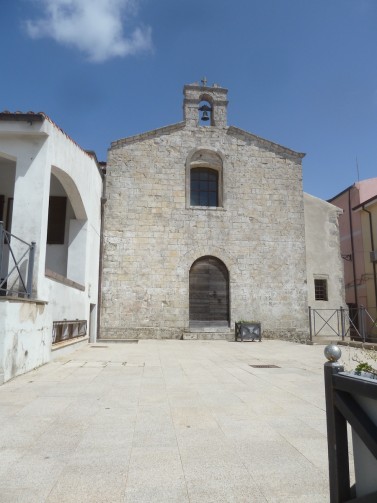The building is located a few dozen meters from the Church of the Immaculate Conception and stands out for its façade made entirely of face-faced limestone blocks. Its construction should be placed in the 17th century, in the climate following the Council of Trent (1545-63), when the cult of the Cross of Christ spread to the island and with the related Confraternities of a clearly Iberian style. What is peculiar is the fact that both the one pertaining to the Rosary (usually more present in southern Sardinia) and the one pertaining to the Holy Cross spread in Osilo. Their purpose was to assist the deceased, the poor, and widows, but their very strong religious sentiment was manifested during public processions where the Disciplinants participated by practicing self-flagellation. The degree of relative autonomy of the brotherhoods allowed them to have their own charter and income. The church, which also contained an altar dedicated to St. Philomena and one to St. Catherine, is shown to be single-roomed and rather bare after its transformation in the mid-20th century into a space to house a parish cinema. Restorations, not completed, have left visible signs of the original decorations where a vision of the church and parish inside a small medallion stands out.









